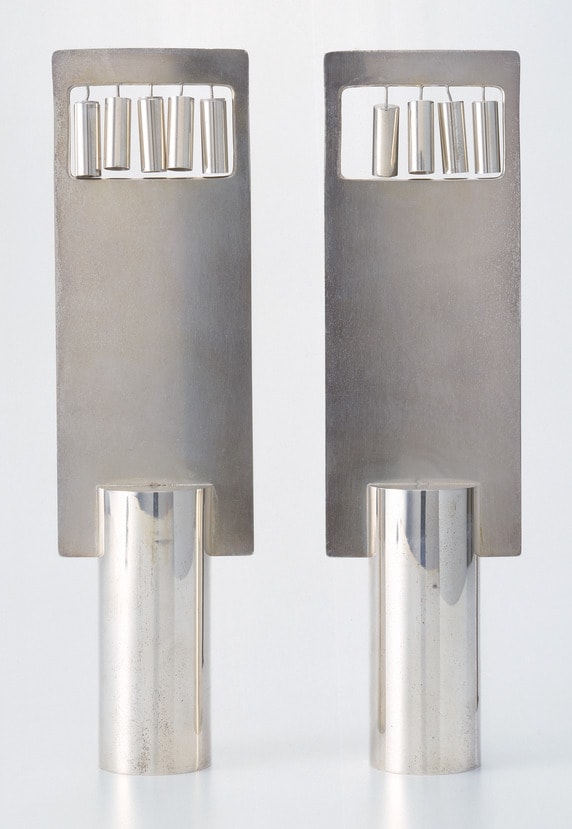
- Object Name:
- Torah Finials
- Artist/Maker:
- Moshe Zabari
- Bio:
- b. 1935, Jerusalem; d. 2025, Israel
- Place Made:
- New York, United States
- Date:
- 1964
- Medium:
- Silver: pierced and parcel-gilt
- Dimensions:
- 10 1/16 × 2 3/4 in. (25.6 × 7 cm)
- Credit Line:
- Gift of the Abram and Frances Kanof Collection
- Accession Number:
- JM 97-65a-b
Not On View
One of Zabari's most ambitious undertakings during the period resulted in the exquisitely wrought and conceived pair of Torah finials (rimmonim) of 1964. The basic function of Torah ornaments lies in the realm of hiddur mitzvah, as they beautify the synagogue and the experience of worship. Glorifying God by decorating the Torah, the handwritten parchment scroll in which the law is revealed and which is often lovingly known as "a Tree of life to those who hold fast to it": is a practice known to date from at least the Middle Ages. While traditional forms for finials have been either towers or pomegranates (rimmonim in Hebrew), Zabari's symbolic content emphasizes the Decalogue. The two Tablets of the Law are reduced to their essential form, but are monumental in their frontal positioning and geometric simplicity. The Ten Commandments are referred to by ten cylindrical bells, the use of which represents a conscious traditional choice. Bells adorned the robe of the high priest in biblical times, and hence have been historically used on all types of Torah ornaments. In this piece Zabari has accomplished the complex task of embodying traditional shape and content in an effective contemporary design.
Information may change as a result of ongoing research.